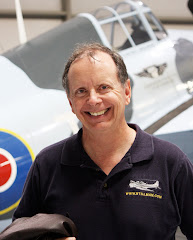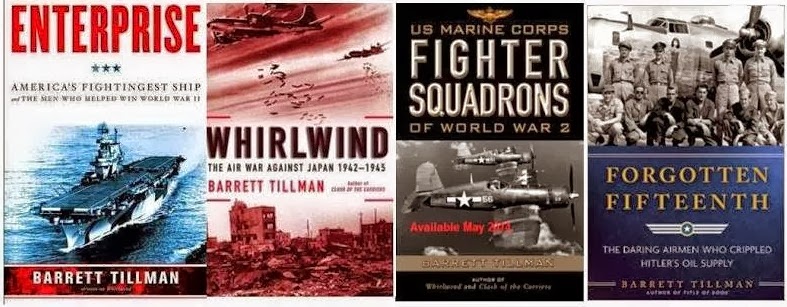Today is the 75th anniversary of the Japanese attack on Pearl Harbor, a
world-historic event that officially launched America into the Second World
War. Yet among the public attention in
nearly every account, the stellar player often is taken for granted.
I refer to
the Imperial Navy’s carrier striking force, the Mobile Unit or Kido Butai.
That Sunday morning the aircraft carrier was much like the proverbial
musician who works 20 years to become an overnight sensation. When the Imperial Navy stunned the world on December
7, Japan and America had two decades of experience operating carriers,
perfecting equipment and techniques.
Both navies had commissioned their first flattops in 1922.
Admiral Isoroku Yamamoto had risen to command the Combined Fleet in
August 1939, days before the new war in Europe.
An aviation advocate, he had supported Japan’s carrier program and, once
committed to war, he backed the Hawaii plan as preferable to the doctrinal
“decisive battle” in mid-Pacific. He had
served in America between the wars, and realized that a pre-emptive strike was
essential to Japan’s success—if success were possible at all.
Spurred by America’s embargo to protest Japanese aggression against
China, the “Hawaii plan” began with a preliminary study in January 1941. More details developed from April onward
under Rear Admiral Ryūnosuke Kusaka, chief of staff of
the newly formed First Air Fleet. There
was nothing else like it on earth: all of Japan’s six large carriers
concentrated under Vice Admiral Chuichi Nagumo.
By comparison, neither the U.S. nor British navies had operated more
than three carriers together—and never as a permanent unit with integrated
operations.
However, in November 1940 HMS Illustrious
launched a successful nocturnal strike against the Italian base at Taranto in
the “heel” of the boot. Three major
combatants were knocked out of action, altering the naval balance in the
Mediterranean literally overnight.
Taranto’s influence on the Pearl Harbor attack is still debated, but the
concept was proven.
Intensive training began in late August, affording Nagumo’s aircrews
barely three months to perfect tactics and techniques. Commander Minoru Genda’s plan involved a
triple blow: high-altitude level bombers, dive bombers, and torpedo
planes. However, Pearl Harbor presented
a problem: the average depth was barely 40 feet, and Japanese torpedoes needed
twice as much to recover, rise to the desired depth, and run safely. Ordnance engineers found an inspired
solution: disposable wooden fins that let the torpedoes run at a shallow
setting.
The six carriers bound for Hawaiian waters were arrayed in pairs: the
giant sisters Akagi and Kaga in the First Carrier Division; Soryu and Hiryu in the Second; and newly-commissioned Shokaku and Zuikaku in
the Fifth. They embarked some 420
bombers, torpedo planes, and fighters, while battleships and cruisers operated
catapult-launched floatplanes.
The carriers were escorted by two battleships, three cruisers, nine
destroyers, and nourished by seven tankers.
The latter were more important than the escorts, as the striking force
could not reach Hawaiian waters and return without replenishing at sea.
Kido
Butai sortied from the Kurile Islands on November 26. Crossing nearly 4,000 miles of the North
Pacific under radio silence, the task force avoided detection during the eleven-day
transit. Meanwhile, submarines had
already departed home waters and bases in the Marshall Islands.
Emperor Hirohito had approved war against the Western powers barely a
month before, but did not permit the attack until December 1. Thus, Nagumo’s force represented an arrow
launched at the heart of the U.S. Pacific Fleet that might have been recalled
in flight. Instead, it flew straight to
its target.
Early that
morning, 230 statute miles north of Oahu, Kido
Butai’s six carriers lofted 183 aircraft in 15 minutes—an achievement under
any condition, let alone the Pacific’s pitching swells. Vice Admiral Chuichi Nagumo’s practiced air
groups quickly assembled, formed up, and set course. A second wave of 167 followed.
The first wave was timed to arrive over Pearl about 30 minutes after Japanese
diplomats delivered Tokyo’s refusal to accept Washington’s demands. But the message from Tokyo took too long to
decode, so the attack proceeded as a surprise.
The result was boiling anger throughout America, fueling a surging rage
that never abated until VJ-Day.
While the leading squadrons winged southward under Lieutenant Commander
Mitsuo Fuchida, Kido Butai continued
as briefed. At 7:15 the second wave of
168 planes lifted off its decks, comprising 54 level bombers, 78 dive bombers,
and 36 fighters.
The first bombers over the target were 16 Nakajimas from Soryu and Hiryu. Briefed to hit
carriers on Ford Island’s northwest coast, they went for alternate objectives,
destroying the target ship USS Utah
and damaging a cruiser.
Akagi’s torpedo
squadron led a devastating attack. The
Nakajimas swept in from the north shore of the harbor, skimming low between
Hickam Field and the fuel tank farm, then nudging downward over the water. Making 100 mph at 65 feet, they deployed as
per individual briefings and turned onto their attack headings. A quarter mile ahead lay the gray monoliths
along Battleship Row.
Of 36 torpedoes dropped, probably 19 found their targets. Hardest hit were West Virginia and Oklahoma
moored outboard at the head of Battleship Row.
California, farther ahead of
the others, took two hits and slowly settled onto the mud.
Five torpedo planes were shot down, all from succeeding waves as the
defenders responded and fought back.
The high-level bombers each carried an 800 kg armor-piercing weapon,
designed to penetrate a battleship’s thick armor. The ten planes targeting Arizona scored four hits and three near misses. One of them found the sweet spot, smashing
into Arizona’s forward magazine. The 1,760-pound bomb ignited tons of
gunpowder, destroying the ship in seconds with three-fourths of the crew.
At 8:40, almost half an hour after the first attack, 167 aircraft of the
second wave were led by Zuikaku’s
senior aviator, Lieutenant Commander Shigekazu Shimazaki. No torpedo planes participated but 54
Nakajima level bombers struck three air bases.
The 78 Aichi dive bombers were assigned any carriers in port with
cruisers as secondary goals. Nearly
three dozen Zero fighters established air superiority over Hickam and Bellows
Fields plus Kaneohe Naval Air Station.
Much of the effort was wasted as many dive bomber pilots probably
misidentified ship types; perhaps 28 Aichis dove on destroyers or auxiliary
vessels.
Brunt of the second dive-bombing attack was Nevada, the only battleship to get underway. Already holed by a torpedo, she took six
bombs in a few minutes and developed a list.
To avoid sinking, she was beached near the harbor entrance.
When the second wave departed northward, the entire attack had lasted
not quite two hours, from 7:55 to 9:45.
In their slipstream the Japanese left a stunned result on Oahu, both
physical and emotional.
The attack killed 2,335 U.S. military personnel and 68 civilians.
Arizona was
destroyed and Oklahoma written off. Pennsylvania
and Maryland were lightly damaged but
saw no action until 1943. Tennessee
and Nevada were refitted in 1942 and ‘43;
California and West Virginia were refloated and fully repaired in 1944.
Three cruisers and three destroyers were repaired or rebuilt from 1942
to 1944. Finally, a minelayer was sunk
but repaired and operational in 1944.
Combined U.S. aircraft losses ran as high as 350 destroyed or damaged—there
is wide disparity in details.
At 11:15 Kido Butai began
landing the second wave, completed an hour later. The fliers were jubilant. They knew they had inflicted severe damage
and were eager to complete the task. But
Nagumo opted for prudence. More than 70
returning planes were damaged, and he needed to conserve fuel oil. The Imperial Navy had too few fleet tankers
in 1941 and never caught up. Nagumo
turned for home.
None of the
six Kido Butai carriers survived the
war. Four died at Midway six months
later; another off the Marianas in June 1944, and the last, Zuikaku, at Leyte Gulf four months
later.
Naval
historian John Lundstrom aptly described Kido
Butai as “a 1941 atom bomb.” In
contrast, the U.S. Navy did not field six big-deck carriers until early 1944. So while honoring the defenders of Pearl
Harbor, we should remember that the attackers demonstrated a high order of
organization, competence and imagination—exceeding our own, truth be told.
We had to
relearn that lesson on September 11, 2001.
We should never have to learn it again.



